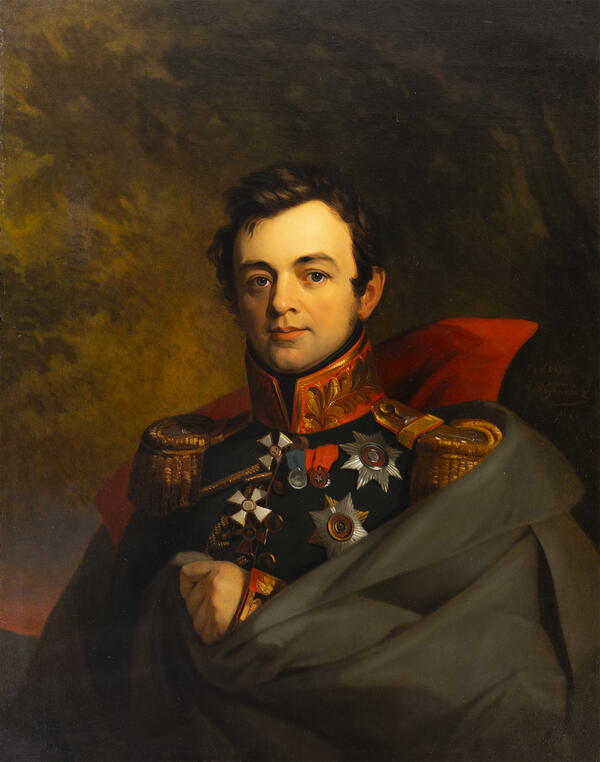The presented canvas was created by Afanasy Kulikov, a native of the village of Isakovo, located very close to the town of Maloyaroslavets (now only one house remains in the village, it was built after the Great Patriotic War). Afanasy Kulikov was an outstanding Russian artist of the 20th century, grew up in a poor, but quite well-educated and cultured peasant family. He studied at the Moscow School of Painting, Sculpture and Architecture. However, after graduating from the course, he did not invoke his right to present a painting to obtain the title of artist. He would later write in his autobiography,
Self-Portrait
Creation period
1917
Place of сreation
the Russian Empire
Dimensions
49x40,5 cm
Technique
canvas, oil
Collection
Exhibition
1
Open in app#2
#4
I understood that it was necessary to paint a picture, specifically a picture. I did not do it, as I considered myself not ready for such a great cause, and I did not think much of the diploma. At that time, I was amazed by the skill of Rubens, Titian, and Van Dyck, and the frescoes of Yaroslavl churches delighted me; this joy was equal to what I experienced in childhood when making painted shaft bows, trays, baked goods, teapots, colorful bright chintz and all the then inexplicable charming attributes of rural holidays.
#5
Even before the Bolsheviks seized power, Kulikov became the de-facto founding father of the Soviet propaganda lubok (traditional Russian popular prints), which became the most important milestone in his career. At the same time, he created several lubok-inspired paintings: “The Blind near the Teahouse”, “Squeezebox Players in the Tavern”, “At the Holy Well”, and “Conversation near the Village Tavern”.
Afanasy Efremovich Kulikov created the “Self-Portrait” in the midst of the Russian revolution.
Afanasy Efremovich Kulikov created the “Self-Portrait” in the midst of the Russian revolution.
#6
A lively laughing face in golden glasses, captivating the viewer with its joyfully enthusiastic mood, but the real meaning of the portrait is revealed in the background. A small abstract figure of a boy, a craftsman at work, a blurry, imperceptible, indiscernible motley background: trees, bushes, almost unidentifiable landscapes in a decorative lubok-inspired manner. This is the past, a memory of childhood and hard work, which is over, left in the background, obscured by the personality of the artist who looks to the future with a smile, asserting to himself: ‘I am an artist’.
Oleg Khromov, author of a monograph on Kulikov’s life and work
#7
The background images in this portrait are quite significant. However, they are not the focal point of the canvas: the face of young Kulikov, contagiously cheerful, downright bursting with happiness, is the prime focus. Indeed, it was at the time when this self-portrait was created that Kulikov believed in himself, established himself as an artist, and found his place in Russian art.
#3
Ministry of Culture of the Russian Federation
read morehide
00:00
00:00
1x
Self-Portrait
Creation period
1917
Place of сreation
the Russian Empire
Dimensions
49x40,5 cm
Technique
canvas, oil
Collection
Exhibition
1
Open in app
Share




